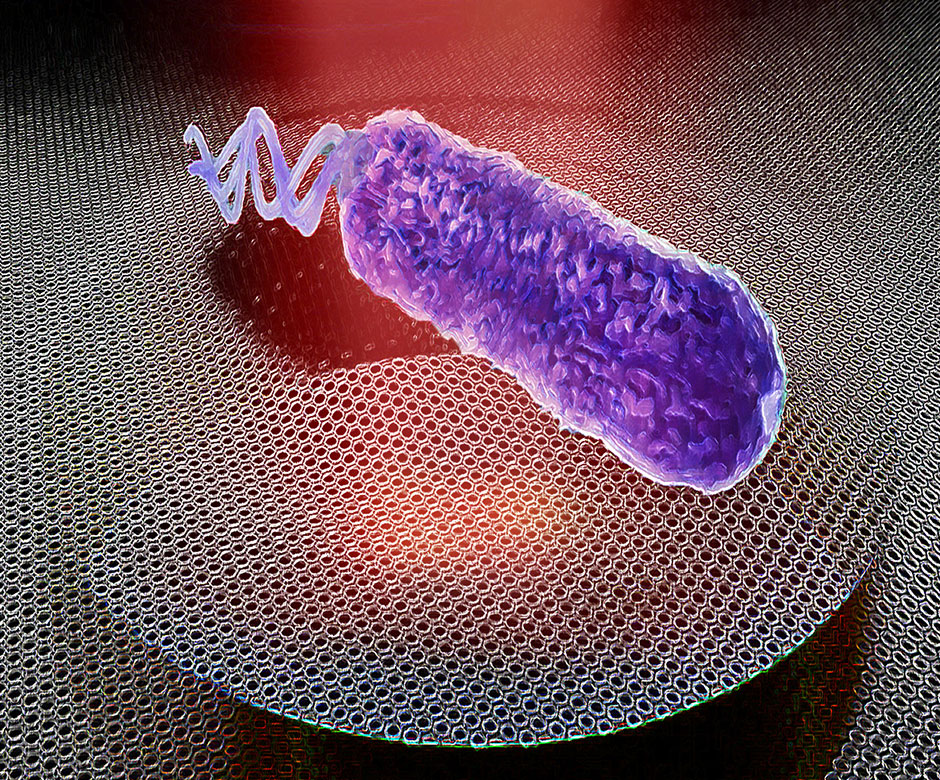ENGINEERINGNET.BE – If we could hear bacteria, we could know whether they are alive or not. When the bacteria are killed with the help of antibiotics, the sounds would stop – unless the bacteria are resistant to antibiotics.
This is exactly what a team of researchers from TU Delft, led by Dr Farbod Alijani, managed to achieve: they captured the minimal sound of a single bacterium using graphene.
Alijani’s team was initially exploring the fundamentals of graphene’s mechanics, but at one point they wondered what would happen if this extremely sensitive material came into contact with a single biological object.
The research group started a collaboration with the nanobiology group of Cees Dekker and the nanomechanics group of Peter Steeneken of TU Delft. The team conducted the first experiments with E. coli bacteria.
Dekker: “What we saw was astonishing. When a single bacterium attaches itself to the graphene drumhead, random vibrations with amplitudes of a few nanometers arise, which we could detect. We could hear the sound of a single bacterium!”
The extremely small vibrations are the result of biological processes in bacteria, with the flagella having the largest share. These are tails on the cell surface that bacteria use to move.
“These flagellar beats on graphene are at least 10 billion times smaller than a boxer’s punch on a punching bag. Yet these nanoscale beats can be converted to sound tracks and listened to,” said Alijani.
The research has huge implications for the detection of resistant bacteria. The experimental results were unequivocal: if the bacteria were resistant to the antibiotic, the vibrations persisted at the same level.
When the bacteria were sensitive to the drug, the tremors subsided for one or two hours and then completely disappeared. Thanks to the high sensitivity of graphene drums, the phenomenon can be detected with just a single bacterium.
Alijani: “In the future, we want to optimize and validate this platform with a variety of clinical samples, so that it can ultimately be used as a diagnostic toolkit for rapid detection of antibiotic resistance in clinical practice.”
–


